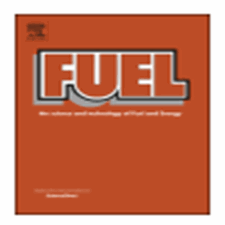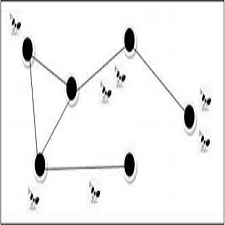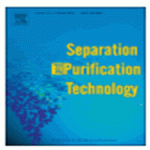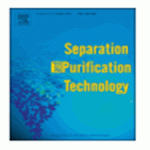توضیحات
ABSTRACT
The existing theoretical and empirical models to describe asphaltene deposition in porous media do not consider the complicated structure of pore network. Permeability reduction due to asphaltene deposition has been mainly attributed to pore volume shrinkage (porosity reduction). However, asphaltene particles can also block pore throats which will lead to severe permeability reduction even when a large fraction of total pore volume still remains intact. Thus, there is a need for permeability models that are explicitly function of pore/hydraulic connectivity. This paper provides a review of the existing models and examines a permeability model that explain permeability impairment due to asphaltene deposition. In this study, we propose a new permeability model based on Critical Path Analysis (CPA) which is a function of average coordination number (average number of available/connected neighbor pores). Furthermore, experimental data in the literature related to limestone, sandstone and carbonate (dolomite) samples are utilized to understand combined effects of surface deposition and interconnectivity loss due to pore blockage on permeability reduction. We observed that surface deposition is the dominant mechanism in the limestone samples studied here owing to large pore throat size compared to the particle size. In the sandstone samples, both the surface deposition and pore throat plugging mechanisms contribute fairly the same in the observed permeability reduction. For the carbonate (dolomite) samples, the pore blockage is the dominant mechanism, which results in rapid sharp decrease of the permeability. It is expected that the outcome of this work improves prediction of the asphaltene deposition in the near wellbore region.
INTRODUCTION
The issue of asphaltene deposition has plagued the oil and gas industry for decades since it has been identified and named as “asphaltenes” in 1837 . Due to the huge costs associated with remediation, it is extremely important to understand the issue of asphaltene deposition and the factors affecting it . Crude oil has several fractions, and asphaltenes essentially tend to be its heaviest, polarizable fractions. They are known as the “cholesterol of petroleum” due to their ability to precipitate as solids and subsequently deposit with changing pressure, temperature and oil composition . Asphaltene precipitation is called the process when asphaltenes become a separate phase from the crude oil. They remain suspended in the liquid phase where the quantity and the size of the asphaltenes are relatively small.
چکیده
مدل های نظری و تجربی موجود برای توصیف رسوب آسفالتین در رسانه های متخلخل، ساختار پیچیده شبکه های حفره را در نظر نمی گیرند. کاهش نفوذ پذیری به دلیل رسوب آسفالتین عمدتا به کاهش حجم حفره (کاهش تخلخل) مربوط است. با این حال، ذرات آسفالتین نیز می توانند حفره های حفره ای را که باعث کاهش شدت نفوذ پذیری می شوند، متوقف کنند، حتی زمانی که یک بخش بزرگ از حجم منافذ کامل باقی می ماند. بنابراین، نیاز به مدل های نفوذ پذیری وجود دارد که به صراحت از اتصالات حفره ای / هیدرولیکی عمل می کنند. این مقاله بررسی مدل های موجود و مدل نفوذپذیری را بررسی می کند که ضریب نفوذ پذیری را به دلیل رسوب آسفالتین توضیح می دهد. در این مطالعه، ما یک مدل نفوذپذیری جدید مبتنی بر تحلیل بحرانی (CPA) ارائه می دهیم که یک تابع میانگین شماره هماهنگی (میانگین تعداد منافذ همسایه های موجود / متصل) است. علاوه بر این، داده های تجربی در ادبیات مربوط به نمونه های سنگ آهک، ماسه سنگ و کربنات (دولومیت) برای درک اثرات متفاوتی از رسوب سطح و تلفات اتصال به دلیل انسداد حفره بر روی کاهش نفوذ پذیری استفاده می شود. ما مشاهده کردیم که رسوب سطح مکانیسم غالب در نمونه های سنگ آهک مورد مطالعه در اینجا به علت اندازه گلو بزرگ منافذ نسبت به اندازه ذرات است. در نمونه های ماسه سنگ، هر دو روش رسوب گذاری سطح و حفره های حفره منافذ نسبتا پایین در کاهش نفوذ پذیری مشاهده شده است. برای نمونه های کربنات (دولومیت)، انسداد منافذ مکانیسم غالب است که منجر به کاهش شدید سریع نفوذپذیری می شود. انتظار می رود که نتیجه این کار پیش بینی میزان رسوب آسفالتین در منطقه نزدیک چاه را بهبود بخشد.
مقدمه
مسئله رسوب آسفالتین صنعت نفت و گاز را در دهه های بعد از آن شناسایی کرده و به عنوان “آسفالتین” در سال 1837 نامگذاری شده است. با توجه به هزینه های عظیم مربوط به تصفیه، بسیار مهم است که مسئله رسوب آفتابگردان و عوامل موثر بر آن را درک کنید. نفت خام دارای چندین قطعه است و آسفالتین عمدتا سنگین ترین قطعه قطبی است. آنها به عنوان “کلسترول بنزین” به علت توانایی آنها در رسوب به عنوان جامدات شناخته می شوند و سپس با تغییر ترکیب فشار، دما و روغن ذخیره می شوند. بارش آسفالتین فرآیند نامیده می شود، زمانی که آسفالتین ها تبدیل به یک مرحله جداگانه از نفت خام می شوند. آنها در فاز مایع به حالت تعلیق در می آیند که در آن مقدار و اندازه آسفالتین نسبتا کوچک است.
Year: 2018
Publisher : ELSEVIER
By : Davud Davudov, Rouzbeh Ghanbarnezhad Moghanloo
File Information: English Language/ 10 Page / size: 742 KB
سال : 1397
ناشر : ELSEVIER
کاری از : داوود داوودوف، روبه غنبنژاد مغانلو
اطلاعات فایل : زبان انگلیسی / 10 صفحه / حجم : KB 742










نقد و بررسیها
هنوز بررسیای ثبت نشده است.